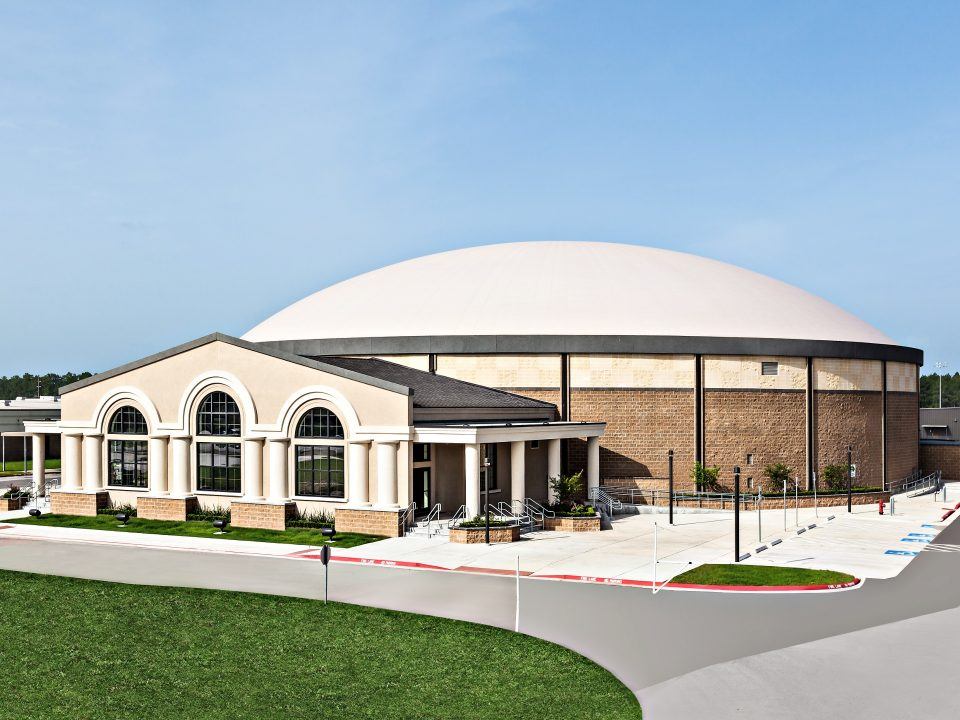Dome Technology builds storm shelters for communities all over the U.S., especially in areas prone to tornado and hurricane. Often the cost of such structures is funded in part by FEMA grant dollars; through the Hazard Mitigation Grant Program, projects that qualify can receive government funding covering up to 75 percent of the project’s exterior or shell.
For a storm shelter to qualify for federal funds, certain qualities must be present. A structure must be able to withstand windborne debris, providing a protective layer that prevents penetration from outside objects. The shelter must tolerate specified sustained wind speeds; hurricane shelters must withstand winds up to 200 mph, and tornado shelters must withstand gusts up to 250 mph. Sufficient open space must also be available inside for sheltering as many people as possible.
Dome Technology concrete domes meet these criteria. The Wind Science & Engineering Center Debris Impact Test Facility at Texas Tech University conducted tests to determine a Dome Technology dome’s ability to withstand windborne debris. A 2X4 was shot at the shell at 90 mph; the board penetrated the outer weatherproofing airform and insulation layer but splintered upon impact with the reinforced concrete dome. The testing was done in accordance with guidelines found in FEMA 320/361 and ICC-500 codes.
These domes range in diameter from 120 feet to 180 feet and in height from 22 feet to 36 feet. The big selling points of the dome storm shelter are open floor space, strength, and economical price.

Storm-shelter construction
A dome’s strength comes from its construction. Each dome shell is thick, consisting of polyurethane foam insulation, steel reinforcing, and concrete.
Because the dome is a self-supporting freespan, the column-free interior is naturally an open space. This available square footage also allows cities or schools to utilize the structure for alternate daily use.
Domes are also seismic tolerant, and the shell’s geometry provides stability and load-absorption characteristics. Because the dome is round, an impact force is evenly spread around the shell, rather than being channeled to weaker spots such as sharp corners prone to stress concentration.
A final advantage of domes versus conventional concrete buildings is that the cost of the dome per square footage is less expensive than trying to build a conventional building meeting the FEMA requirements. For more examples of these projects, watch our video on Texas storm shelters.